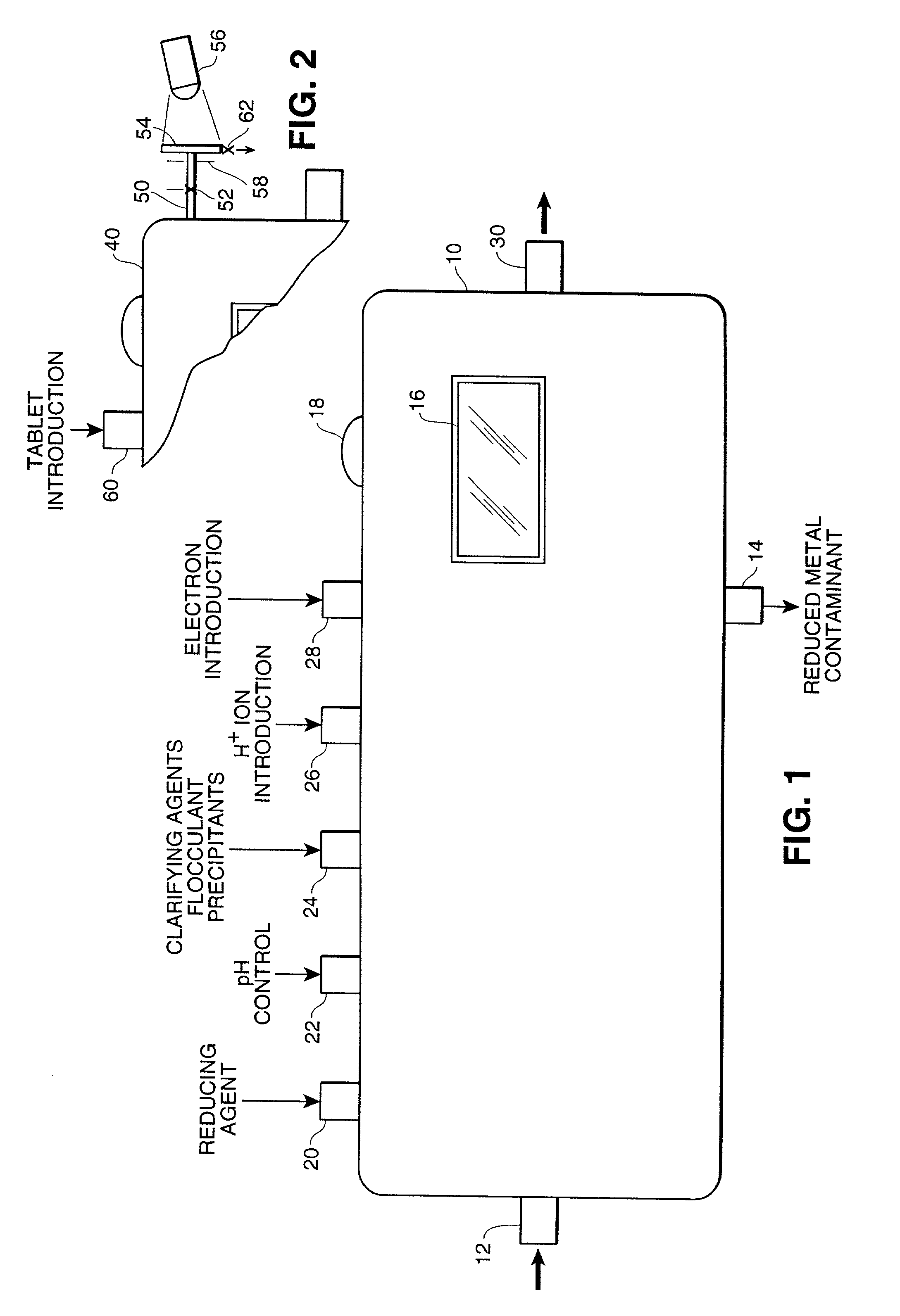Determination of multi-valent metal contamination and system for removal of multi-valent metal contaminants from water
- Summary
- Abstract
- Description
- Claims
- Application Information
AI Technical Summary
Benefits of technology
Problems solved by technology
Method used
Image
Examples
examples
[0195] The invention is further illustrated by, but not limited to, the following examples:
example i
[0196] Determination of Hexavalent Chromium in Water with a Ferrous Reductant.
[0197] A test of this visual determination was conducted in connection with the reduction of Cr.sup.+6 to Cr.sup.+3 using an Fe.sup.+2 reducing agent with the latter being oxidized in the reaction to Fe.sup.+3. As indicated above, the ferrous ion was ferrous sulfate heptahydrate with a formula weight of 278.01 daltons. The oxidized chromium used for this test was sodium chromate tetrahydrate with a formula weight of 234.06 daltons and the reduced chromium was chromium trichloride with a formula weight of 158.38 daltons.
[0198] Approximately 28.35 grams, one ounce, of ferrous sulfate tetrahydrate was diluted in a weight-to-volume measure of 100 milliliters with filtered water. Gentle warming was required to completely dissolve the ferrous sulfate heptahydrate. The original undiluted solution had a very weak greenish yellow color.
[0199] A preliminary test with a distinctly green solution of the reduced chromi...
example ii
[0203] Determination of Hexavalent Chromium in Water with a Cobaltous Reductant.
[0204] A test using visual determination was conducted in connection with the reduction of Cr.sup.+6 to Cr.sup.+3 using a Co.sup.+2 reducing agent and with the latter being oxidized in the reaction to Co.sup.+3. As indicated above, the cobaltous acetate tetrahydrate had a weight of 249.08 daltons. The oxidized chromium which was used for this test was sodium chromate tetrahydrate with a formula weight of 234.06 daltons and the reduced chromium was chromium trichloride with a formula weight of 158.38 daltons.
[0205] Approximately 28 grams of cobalt acetate tetrahydrate was diluted in a weight-to-volume measure of 100 milliliters with filtered water. Gentle warming was required to completely dissolve the cobalt salt. The original undiluted solution had a red-violet color in water.
[0206] A preliminary test with a distinctly green solution of the chromium (Cr III) salt showed no reaction with the cobalt ions ...
PUM
| Property | Measurement | Unit |
|---|---|---|
| Volume | aaaaa | aaaaa |
| Solubility (mass) | aaaaa | aaaaa |
| Toxicity | aaaaa | aaaaa |
Abstract
Description
Claims
Application Information
 Login to View More
Login to View More - R&D
- Intellectual Property
- Life Sciences
- Materials
- Tech Scout
- Unparalleled Data Quality
- Higher Quality Content
- 60% Fewer Hallucinations
Browse by: Latest US Patents, China's latest patents, Technical Efficacy Thesaurus, Application Domain, Technology Topic, Popular Technical Reports.
© 2025 PatSnap. All rights reserved.Legal|Privacy policy|Modern Slavery Act Transparency Statement|Sitemap|About US| Contact US: help@patsnap.com



